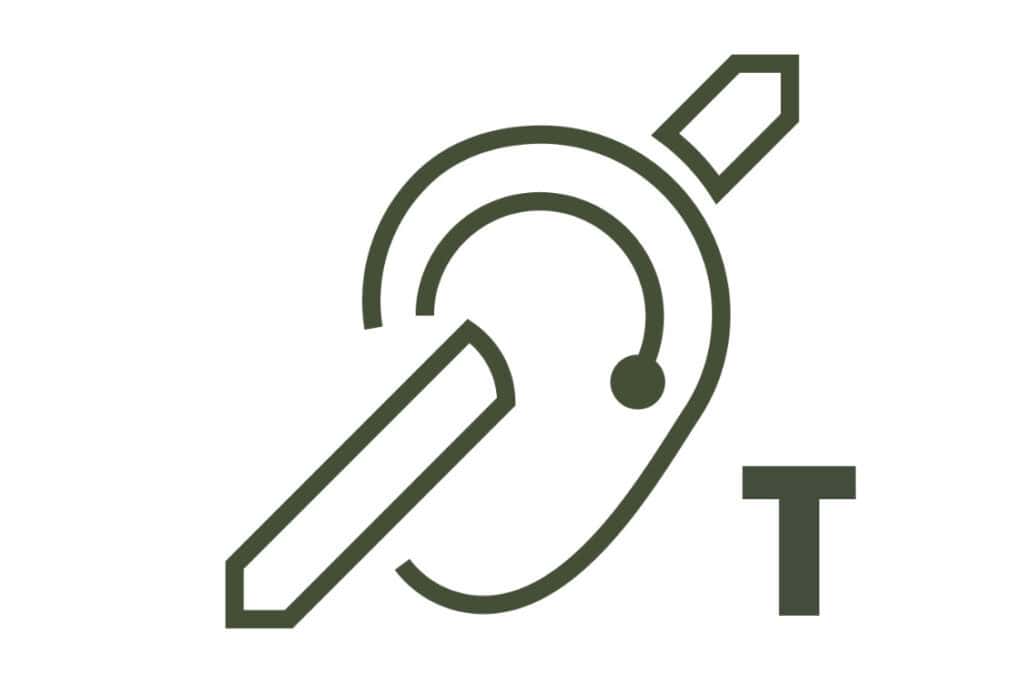We look at seven assistive listening technologies and their advantages and disadvantages in different environments.
Assistive listening systems (ALS) help people who struggle to hear audio in difficult environments. This can include hearing speech in noisy places, music, dialogue on television and the telephone.
There are different technologies that can help do this and each has its advantages and disadvantages in different environments.
We’ve worked with the International Hearing Loop Manufacturers Association (IHLMA)and the Bluetooth Special Interest Group to create information on the different technologies available and how to use them
Hearing loops, telecoil and infrared
A hearing loop or telecoil is a system that uses a copper wire to create a magnetic field that transmits sound from a microphone to a telecoil receiver.
An Infrared system uses an infrared light to transmit sound from a microphone to a telecoil or loop receiver.
Telecoil receivers are commonly found in hearing aids and cochlear implants but are also available for use with headphones if required.
If there is a loop system available, you will see this sign:

To hear the audio from the loop system, you need to switch your hearing aids or cochlear implant to the ‘T’ Setting or switch on your telecoil receiver.
Loop systems are usually fixed to a certain area that you need to stay within to hear the audio. They’re most suitable for places where you will not be moving around, like in a theatre or at a bank desk.
FM/radio
An FM system or radio aid uses an FM signal to transmit the sound from a microphone to a receiver.
You can attach an FM receiver to hearing aids and cochlear implants or use an FM receiver device with headphones.
An FM system allows you to move around freely within a certain range. They’re most commonly used in classrooms or in workspaces where you need to move around a lot.
Audio over WiFi
Audio over WiFi uses a WiFi internet signal to transmit sound from a microphone or sound system. The sound can be received similarly to other WiFi signals through a device like a smartphone, tablet or laptop. To hear the audio, you would then need to connect to your device as you normally would, e.g. Bluetooth, telecoil or headphones.
Bluetooth
Bluetooth has evolved over the years to become faster and use less battery life. It’s become increasingly popular with consumer audio products and with hearing devices such as hearing aids and cochlear implants.
There are different types of Bluetooth connections available for hearing devices. These are all referred to as Bluetooth Low Energy, which was introduced in version 4.0 of Bluetooth and designed specifically for use with hearing devices. It’s different to classic Bluetooth to allow for high quality audio and reduced use of battery life.
Apple’s Made For iPhone (MFi) Bluetooth Connectivity
This type of Bluetooth streaming only works with Apple’s iPhone and iPad. It lets you stream the audio from your phone and tablet directly into your MFi hearing aids.
Google’s Audio Streaming for Hearing Aids (ASHA)
Hearing devices with Google’s ASHA allows any smartphone and tablet to connect to it directly. It also allows products such as TVs with this type of Bluetooth to connect directly.
Auracast™ or Audio Sharing
Auracast™ broadcast audio is a new technology, previously known as Audio Sharing, that is a new standard for Bluetooth LE Audio.
Auracast™ broadcast audio will enable an audio transmitter, such as a smartphone, laptop, television, or public address system to broadcast audio to an unlimited number of nearby Bluetooth audio receivers, such as hearing aids and cochlear implants, earphones and speakers.
There will be three functions available as part of Auracast™:
Share Our Audio
Auracast™ broadcast audio allows you to invite others to share your audio experience. For example, if you’re listening to music on your smartphone through your Auracast enabled hearing aids, you can invite friends and family with Auracast enabled devices to listen to your music with you through Auracast™ broadcast.
Unmute Our World
With Auracast™ broadcast audio, public spaces that have audio on mute will now be able to share the audio through Auracast™ broadcast. For example, silent TVs in public venues like airports, gymnasiums, restaurants, and waiting rooms will be able to broadcast audio that any visitor with Auracast™ enabled Bluetooth devices will be able to hear.
Hear Our Best
When visiting a public venues like train stations, theatres, cinemas and conference centres, visitors will be able to receive audio broadcasts from the public address system directly into their Auracast™ enabled device.
For example, travellers at an airport will be able to receive essential flight announcements such as gate changes, boarding schedules, and other travel information directly to their personal audio device.
When used in this way, Auracast™ broadcast audio could function as the next-generation assistive listening system (ALS) technology.
Products and hearing devices that support Auracast™ broadcast audio are starting to emerge.